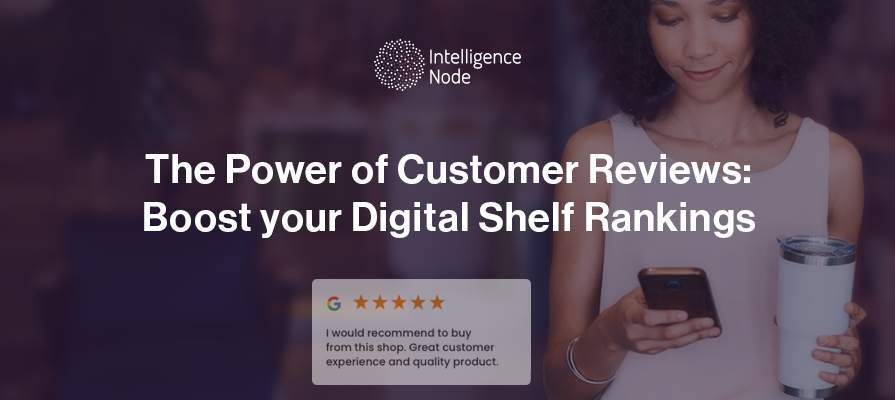In the 21st century, the profile of the digital shopper has evolved dramatically, mirroring the seismic shifts in the retail landscape. Today’s retail environment is predominantly digital, with consumers expecting seamless, personalized shopping experiences across multiple channels. This omnichannel approach has become not just a preference but a demand among shoppers, underlining the critical importance of digital tools and strategies for retailers. Read ahead for a statistical analysis of this shift, drawing on real responses from 1,000 US-based digital shoppers, recorded in Intelligence Node’s latest Consumer Buying Behavior Report, 2024. This report is a cornerstone for retail managers aiming to navigate the complexities of modern consumer expectations and forge strategies that resonate with the new digital shopper.
1. Abandoned Carts Amongst Digital Shoppers: Reasons Behind Lost Sales
Hidden fees and delivery charges are the principal culprits behind cart abandonment, with almost two-thirds of shoppers identifying these as their top friction points. This issue transcends across various demographics, revealing interesting patterns based on age and income. Notably, older age groups encounter a broader range of issues leading to cart abandonment compared to their younger counterparts. For them, the lack of free returns and an inflexible exchange policy emerge as significant concerns. Conversely, younger shoppers are more likely to be deterred by longer delivery timelines. Furthermore, individuals in higher income brackets report being affected by a wider array of issues than those in lower income brackets, with the absence of free returns and rigid exchange policies particularly problematic for them. This insight into shopper behavior underscores the complexity of online retail and the need for tailored strategies to address diverse customer needs.
2. Consumer Channel Preferences
One in every two shoppers expresses a preference for shopping on online marketplaces such as Amazon and Walmart, marking them as the most favored channel. This is followed by brick-and-mortar stores, which attract 37% of shoppers, highlighting a significant yet secondary preference. Notably, the inclination towards physical stores increases with age, especially among those aged 55 and above, highlighting the varied shopping behaviors across different demographics. On the other end of the spectrum, social media shopping emerges as the least preferred channel. Regardless of age group or income level, over half of the shoppers place it at the bottom of their list, indicating a widespread reluctance to embrace this mode of purchasing.
3. Key Influencers in Shoppers’ Purchase Decisions
Free, fast delivery emerges as the paramount factor influencing shoppers’ decisions, with 60% of respondents highlighting its importance. This preference for speedy delivery is especially pronounced among the younger demographic, where it garners emphasis from 68% of respondents. Following closely in terms of influence are competitive prices and positive customer reviews, which jostle for second place, revealing interesting variations across different income and age groups.
Among older shoppers, competitive prices hold significant sway, with 75% and 69% of respondents in these age groups rating it as a key consideration. This emphasis on price competitiveness also extends to those who plan to spend less or maintain their current spending levels, underscoring the role of budget considerations in their purchase decisions. Conversely, for shoppers intending to increase their spending, positive customer reviews become the second most crucial factor, highlighting the value placed on the assurance of quality and satisfaction.
4. Top Reasons Behind Product Returns
Damaged products and size or fit issues dominate the reasons for product returns, with over 65% of shoppers citing these as their top concerns. This highlights the critical importance of product integrity and accurate sizing information for digital retailers. Interestingly, the discrepancy between the product images and the actual product emerges as a more significant issue among younger shoppers compared to the elderly. This trend depicts the value young, savvy shoppers place on the accuracy and detail of product page descriptions, reflecting their meticulous, value-first approach to online shopping.
Furthermore, size and fit concerns are particularly pronounced among female shoppers. Nearly three out of four have returned products due to these issues, pointing to a substantial disparity in satisfaction with product sizing. This insight emphasizes the need for retailers to provide more detailed and accurate sizing information, especially catering to the female demographic, to reduce the rate of returns and enhance customer satisfaction.
5. The Dual Screen Shopping Phenomenon
One in three shoppers compares prices of similar products online while shopping in-store, a habit that reflects the growing trend of price sensitivity and a value-driven approach among consumers. This behavior highlights the integration of digital tools into traditional shopping practices, with a significant 33% of consumers actively seeking better deals online even as they browse physical aisles. Interestingly, this practice is not uniform across all purchases. About one in four shoppers reserves online comparisons for specific items, indicating a selective approach to leveraging digital insights. Furthermore, nearly a quarter of shoppers (24%) turn to online platforms to consult customer reviews, highlighting the critical role of detailed reviews and robust ratings sections on product pages in influencing in-store purchase decisions.
The propensity to seek out online comparisons while in-store varies significantly with age; about three-quarters of shoppers aged 18 to 44 are more inclined to engage in this behavior, mainly for price comparisons and to read customer reviews. This trend is less prevalent among older consumers, suggesting a generational divide in shopping habits. Gender differences also emerge in this context, with 72% of men likely to compare products online, compared to 60% of women. This disparity reveals varying degrees of reliance on digital resources between men and women when making in-store purchasing decisions.
6. Shoppers’ Favorite Emerging Tech Tools
Google image search and price comparison tools and websites stand out as the most utilized technologies for online shopping. Younger shoppers, particularly those from Gen Z, along with female consumers, display a pronounced affinity for virtual try-on features. This preference for immersive technologies suggests a desire for a more interactive and personalized shopping experience, aligning with the expectations of a digital-native generation. Moreover, the adoption of augmented reality (AR) and 360-degree zoom features tends to increase with the shopper’s age.
Income also influences technology use in online shopping. Individuals planning to increase their spending in 2024, particularly those in income groups of $75,000 and above, are more inclined to use chatbots and virtual assistants. This trend highlights the growing importance of personalized, efficient customer service options in facilitating higher spending decisions and improving the overall shopping journey.
7. The Rise of Shopping on Social Media
Social media has become a significant channel for shoppers, especially among those planning to increase their spending in 2024, with over half occasionally making purchases through platforms like Instagram, TikTok, and Facebook. Despite this trend, a considerable portion of consumers, 46%, still refrain from shopping via social channels, indicating room for growth in this area.
The popularity of social media shopping is notably high among the 25 to 44 age group, where over 50% regularly engage in this practice. However, this trend sees a sharp decline among those aged 44 and above, highlighting generational differences in shopping habits. Overall, 44% of respondents use social media for shopping sometimes, with an additional 10% leveraging these platforms constantly.
8. The Influencers of Social Shopping Decisions
Positive ratings and reviews are the most significant influencers for shoppers on social channels, securing nearly 64% of votes. This is closely followed by the appeal of high-quality images and detailed product information, which sway 52% of consumers. These elements together highlight the importance of transparency and visual appeal in online shopping environments, guiding the majority of purchase decisions. Additionally, a free and flexible return policy ranks highly across various age groups, with 36% of shoppers citing it as a crucial factor in their decision-making process.
The influence of brands promoted by social media influencers, along with the lure of exclusive discount codes, holds particular sway among the younger demographic, specifically those under 44. Recently, a shift in consumer attitudes toward influencer partnerships is also evident. While in 2023’s Consumer Survey Report, influencer partnerships influenced only 5.6% of shoppers, this figure jumped to 15.7% in 2024, indicating a growing receptiveness to influencer involvement in retail experiences. Ratings and reviews, however, remain the paramount influencer for those purchasing through social channels, highlighting the enduring power of peer feedback in the digital shopping landscape.
Conclusion
In conclusion, the digital shopping landscape is constantly evolving, influenced by the interplay of technology, consumer expectations, and social media dynamics. Understanding these shifts is crucial for retailers and brands aiming to stay ahead in a competitive market. As preferences towards fast delivery, detailed product information, and social media shopping continue to shape the buying process, the importance of adapting to these trends cannot be overstated. For a more comprehensive exploration of how these factors are defining the future of retail, check out the full consumer survey report. Delve into a detailed view of the insights and statistics we’ve uncovered to better navigate the changing world of digital shopping- and book a demo to learn more about how Intelligence Node can propel your brand to success in 2024.




